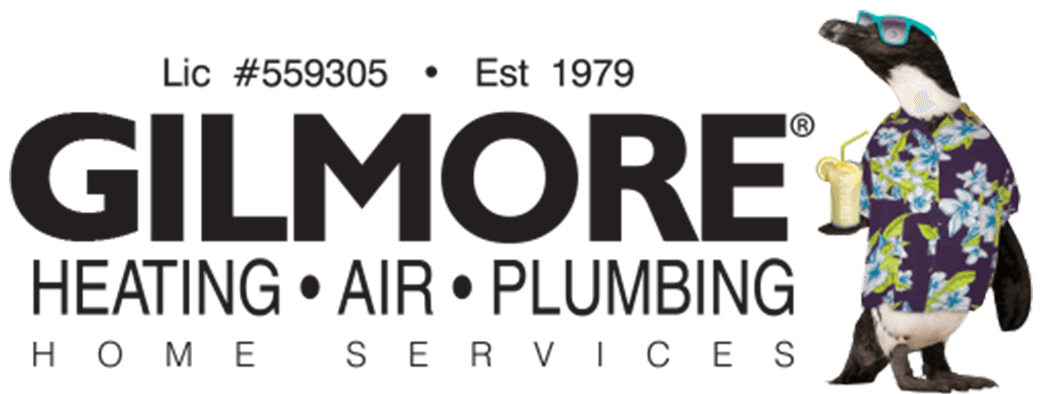As the weather starts heating up in earnest this week, here at Gilmore we know that the phone calls are going to start rolling in quickly. While we love assisting our customers, we believe in saving them money whenever possible.
There are many problems that can affect air conditioners which require professional attention. However, there are some that do not. Here are the three most common AC issues that can be remedied by homeowners, without professional assistance.
Clogged HVAC Filters
Is your air conditioner not putting out much air? It might be the air filter.
Every home that has a central cooling and/or heating system has an intake air filter somewhere in the home. If you’re not sure where it is, check around your home for an especially large air vent covered by a grate that either pops out or has a couple of screws holding it in place.
In order for your air conditioner to work properly, this filter needs to be replaced regularly. That’s because the filter catches dust and other debris that originates in your home, preventing it from being sucked through the air conditioner and causing damage. Over time, this debris will build up in the filter, reducing airflow and reducing the effectiveness of your AC.
Sooner or later, the ultimate consequence of this is that your air conditioner coils will freeze up. This can cause serious damage.
If you’re feeling very little airflow from your AC, turn it off and then replace the AC filter (don’t run the AC without the filter in place!). If you see a marked improvement in performance, then the filter was likely just caked in too much dust.
If you don’t see an improvement, check the coils on your AC unit. If they’re frozen up, then you’ll need to keep your air conditioner off and allow the coils to thaw. Once the ice has melted, try running your AC. If it’s still not putting out a steady flow of cool air, then it’s time to give Gilmore a call, as either damage has been done to your AC, or something else is going on.
Tripped Electric Breakers
Air conditioners require a lot of power. If you’ve ever seen the lights dim when you plug in your vacuum cleaner or another appliance, you can understand how a single piece of equipment can tax your home’s electrical system.
This is why every home comes equipped with a breaker box (or in the case of very old homes, fuse panels). If the total electrical draw in a part of your home—such as the kitchen, living room, garage, etc.—exceeds what is safe, then the breaker will flip, cutting the power.
However, your AC system should always be on its own circuit, thus you likely won’t be able to tell that the AC has flipped a breaker. If the AC is on its own circuit (if it’s not, please contact us immediately, as this is a serious concern), all you’ll notice is that your air conditioner simply won’t turn on. If it won’t start, check the breaker for the circuit it’s on. If it has been triggered, simply reset the breaker, and you’ll be able to start your AC.
It may be necessary to avoid running other major appliances, such as vacuum cleaners, while your AC is running. However, if the breaker trips again while only the AC is running, then there may be a larger issue, such as a wiring problem. If the breaker keeps tripping, then it’s time to call Gilmore.
Dead Thermostat Battery
This is a very common issue, and probably the easiest one to fix. If the display on your thermostat is blank, and doesn’t power on or otherwise respond when you press a button, then the battery is likely dead.
If you’re using an older style LCD thermostat, then replacing the battery is very easy.
First, check around the edges of the thermostat to see if there’s a button or catch to press in order to remove the thermostat casing. If there’s no such release, then simply grasp the front of the casing firmly, and gently pull it toward you. It should pop off in your hand.
You should immediately notice a compartment with one or more batteries inserted—typically AAs, but occasionally 9 volts or other batteries are used. Remove the dead batteries, and replace them with high quality alkaline batteries (don’t use cheap “heavy duty” batteries, which have a short lifespan and tend to leak and have other issues).
The thermostat should immediately power on, and you can go ahead and replace the cover. If the thermostat still won’t turn on, then professional service is likely necessary.
If you’re using a newer style smart thermostat, such as a Nest, these use rechargeable batteries which are charged through your home wiring. If an issue arises with your smart thermostat, you’ll likely want to go ahead and give us a call.
Hopefully, this brief primer on common AC issues will help you avoid any unnecessary service calls. Here at Gilmore Heating Air and Plumbing, our goal is to provide you with top notch HVAC service. If you ever have questions about your air conditioner, just give us a call, or use our site’s contact form to request an appointment.

